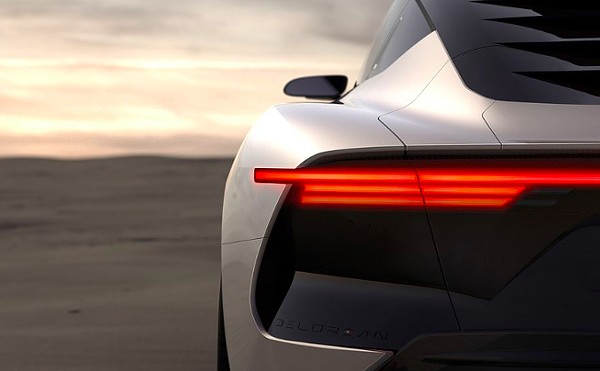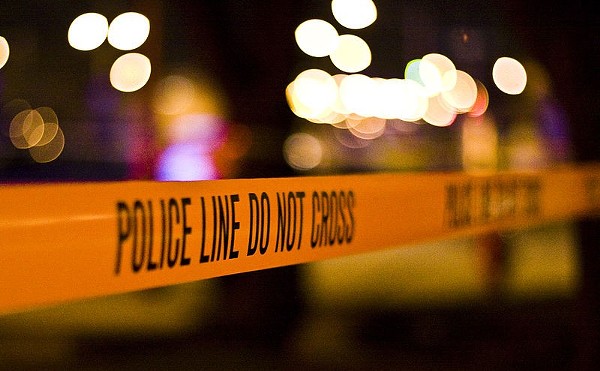Last month’s “Project Deliverance” federal drug-trafficking sweep netted arrests and drug seizures across the country — but not in the Alamo City. In the Western District, administered from San Antonio, the operation produced arrests in El Paso, Midland, and Alpine, charging defendants with links to Mexican drug-trafficking organizations out of Ciudad Juárez. Following the sweep, authorities trotted out more ominous assessments. “Drug trafficking across the Southwest border has led to a surge of drugs in neighborhoods across the U.S.,” said Kevin Perkins, assistant director of the FBI Criminal Investigative Division.
But if you haven’t noticed a surge in your neighborhood, you’re not alone. In the first article in this series `“A dry spillover,” May 12`, the Current debunked official federal reports that San Antonio serves as a logistical hub for Mexican drug-trafficking organizations, and this latest federal enforcement action echoed our findings. This year’s National Drug Threat Assessment from the U.S. Justice Department and the National Drug Intelligence Center indicated illegal drug use has remained stable over the past five years, while the use of some drugs, including cocaine and methamphetamine, has actually declined.
Clearly, though, the fact remains that people in America use drugs, and people in our city do as well, and criminal enterprises are in place to supply local demand. In San Antonio, that by and large means the Mexican Mafia, a Texas prison gang also known as the Mexikanemi. The tightly organized paramilitary-style structure oversees virtually all drug dealing in the city, either through retail sales, wholesale supply, or the levy of a tax known as “the dime” on independent narcotics distributors. Through sophisticated intelligence networks, logistics operations, and collection systems, the homegrown and largely Mexican-American gang wields a near monopoly on San Antonio narcotics trafficking.
The Mexikanemi, distinct from the California-based Mexican Mafia, was founded in 1984 by Heriberto “Herb” Huerta in a Huntsville prison, where he was serving three life terms for murder conspiracy and racketeering. Huerta, now in a supermax federal penitentiary in Colorado, appointed himself president for life, and designated San Antonio as the gang’s permanent geographic capital.
Interviews with Bexar County prosecutors and agents from the local office of the Federal Bureau of Investigation reveal a complex, disciplined, and brutally effective organization that has grown and evolved substantially since its foundations were first put in place.
A military town
San Antonio has a general, who is the leader of the Mexikanemi’s “free world” structure (though other subsidiary cities may have their own operational generals). San Antonio’s general has his captain, and the captain has a lieutenant of lieutenants rounding out the city’s top brass, who divide our city into four quadrants. Each quadrant is administered by a lieutenant, who relies on an elite staff of loyal sergeants to “maintain order” at an operational level. Then there are the soldiers. Of these, there are hundreds in San Antonio, and thousands throughout the state and beyond.
Strictly speaking, the Mexican Mafia is not a narcotics-trafficking business so much as it is a diversified services enterprise intent on developing numerous revenue streams. Its Constitution states: “Being a criminal organization, we work in any criminal aspect or interest for the benefit and advancement of Mexikanemi. We shall deal in drugs, contract killings, prostitution, large scale robbery, gambling, weapons and in every thing `sic` imaginable.”
Prosecutors and authorities have frequently celebrated this document’s existence because it lays out in black and white a fundamental requisite for federal-racketeering charges. “It is a very nice little paragraph,” says Assistant Bexar County District Attorney Mary Green, the tough-as-nails prosecutor who has made life miserable for Mexikanemi members for more than a decade. “It basically proves a RICO criminal enterprise.”
RICO, short for the Racketeer Influenced and Corrupt Organizations Act, is the federal law that provides for extended criminal penalties including hefty fines, forfeiture of property, and up to 20 years in prison for each racketeering count. RICO prosecutions have been used to wallop the Italian mob, the Hell’s Angels, and other prominent gangs. The U.S. Attorney has swung the RICO sledgehammer, an intricate and time-consuming prosecution, on a number of occasions against Mexikanemi. It seems, in fact, that roughly every five years, the feds, working with state and local officials, swoop in and wipe out the entire San Antonio leadership in this way.
Among the requirements for a RICO case is a provision that the crimes in question involve interstate commerce. Green just concluded a resoundingly successful and high-profile six-year RICO prosecution in May, one that ultimately closed the books on dozens of cold-case San Antonio homicides and dealt lengthy incarceration sentences to numerous Mexikanemi officers.
“In our case,” she said, “the interstate-commerce portion was proved by the drug business that the Texas Mexican Mafia is involved in. Neither heroin nor cocaine is produced in the United States, and we had a great deal of testimony about the sheer quantities of both heroin and cocaine the Texas Mexican Mafia distributes, and has for years and years, decades even. `Our witnesses` testified about kilos and kilos and kilos over years and years and years. It follows that, if they are getting it from outside the U.S., ergo it involves interstate commerce.”
Starting on a dime
Most of Mexikanemi’s “kilos and kilos and kilos” that Green cites are not dispensed at the street level by the actual prison gang. Some soldiers do deal — in fact the rank-and-file members are each allowed up to three retail operations — but midlevel and retail drug distribution in San Antonio is dominated by street gangs and freelancers.
The primary mechanism that Mexikanemi uses to control the city’s narcotics commerce is the infamous “dime.” Under this system, all of San Antonio’s drug dealers must pay 10 percent of their sales to the organization. Soldiers who exceed the three-store limit must as well. The system requires an almost omniscient knowledge of the city’s narcotics market — a permanent level of intimacy law enforcement may only envy.
The gang relies on its extensive network of street intelligence to build and maintain its dime registry. Whenever members become aware of a new outlet for drugs, they conduct a sort of buy-and-bust sting operation. They set up outside the physical location and provide a low-level user with some cash with which to score. If the druggie returns with product, he or she keeps the merchandise and is sent away. The soldiers file a report with their superiors.
Next comes the courtesy call. The Mexikanemi welcome wagon visits the dealer and calmly explains the criminal tithe in San Antonio to the pusher. During this initial interview, the extortion executives assess a dime amount to be paid based on sales volume, including any back taxes and penalties that may be owed. In lieu of cash payment, property such as a car may be confiscated. If all goes smoothly, the new retail outlet is folded into the registry, and the dealer becomes part of the mafia’s permanent tax base.
Things do not always go smoothly. Some peddlers, usually just illegal-substance abusers with an entrepreneurial flair, balk. In such cases, enforcers organize a “door kick.” In this exercise a squadron of mafia soldiers stages a home invasion. Gunmen burst in, occupants are rounded up and bound in a central location, the premises are searched, and all cash, drugs, and valuables are taken. Before the visitors depart, the dealer is given another chance to join the tax rolls.
“Most people tend to agree to the terms of the dime after that,” Green notes wryly. The up side for dealers is a certain level of protection, the suppression of direct competition, and a stable supply of product supplied by Mexikanemi wholesale. Meanwhile, the Mexican Mafia’s vast extortion infrastructure means that it skims lucrative profits from the trade without necessarily exposing itself to the quotidian risk of street-level retailing.
“We had one informant outfitted with a GPS device,” recalls Green. “He went out in one afternoon by himself and collected payments from 20 or 30 houses.” That was one soldier, on one afternoon. There are hundreds of soldiers canvassing points of sales on an ongoing basis in San Antonio, as well as via chapters in cities including Houston, Austin, Laredo, and Dallas, and tentacles throughout the smaller counties of Southern Texas. Authorities estimate that their total take just from the dime tallies roughly half-a-million dollars per year. “All of that money is funneled back up the hierarchy, back to the general in San Antonio,” says Green. Dipping into the dime is a good way to shorten life expectancy.
The arrangement thus guarantees a market for the narcotics that the organization either acquires from middlemen smugglers or occasionally imports directly via contacts in Mexico. Despite widespread public concerns — fueled by irresponsible politicking by public officials — regarding the infiltration by Mexican cartels of San Antonio and other U.S. cities, the predominant model has actually evolved under the aegis of sophisticated and powerful indigenous U.S. prison mafias, which in turn forge commercial relationships with foreign traffickers. Other powerful prison gangs, such as Barrio Azteca or the Texas Syndicate, ply San Antonio as well, generally under treaty with the Mexikanemi. In turn, the San Antonio organization can also operate in a limited manner in cities where they are not the dominant force.
The mean streets
At the retail level, street gangs and independent dealers generally manage the sale of illegal substances in San Antonio. Street gangs operate below the level of hardcore prison gangs, lacking the tight vertical organization of the latter, though some of the larger, national gangs have developed impressive hierarchies. Nationwide players such as the Latin Kings, the Bloods, and the Crips operate outposts in our city. But San Antonio also plays home to local neighborhood bands that wreak mayhem and mischief, peddle drugs, and whose members may eventually wind up incarcerated and potentially in one of the prison gangs that recruit on the inside.
In the late 1980s and early 1990s, street gangs mushroomed throughout Bexar County, and deadly turf battles, often predicated on commercial space for drug-dealing, overwhelmed the police. Law enforcement considers 1993 to be the peak year for gang violence. The San Antonio Police Department recorded a stunning 1,262 drive-by shootings that year. Homicides totaled 222.
“It was really rough,” remembers Sergeant Rocky Dyer, a narcotics officer who has worked on the city’s gang crime for more than 20 years. “It took a lot of effort, more gang intelligence, community initiatives, and coordination with federal agencies.” By 1997, drive-bys had fallen to 212, and by 2001 still further to 89. Some of the tactics were draconian, and frequently drew criticism from civil-rights groups. Suspected gang members were prohibited from loitering or associating in public under civil nuisance-abatement laws. “We threw a lot of them in jail,” Dyer says.
“You talk to a lot of the old-school ‘original gangsters,’ and they are trying to stay out of it and keep their kids out of it,” says Sergeant Joe Myers, who heads up the SAPD narcotics task force. “They say it’s just not worth it.”
Modus vivendi
Outside of the city’s grittier neighborhoods, and especially in San Antonio’s more affluent areas, freelancers abound. One retired dealer who sold marijuana and cocaine out of a northside suburb near the medical center explained his M.O. to the Current: “I would only sell to people I knew or through trusted referrals. I wanted to avoid the ‘door kick’ from the Mexican Mafia, so I was paranoid about everything. I did everything to keep my neighbors out of my business.”
On one occasion, he says, a small entourage of friends had gathered to trip on hallucinogenic mushrooms that he had procured along with a shipment of marijuana worth about $3,000. The drugs lay in the open in his apartment, ringed with paraphernalia of all sorts, when the police suddenly started pounding on the door. “One of the neighbors had called in a noise complaint,” he says. “I panicked; I was ready to eat all the ’shrooms I had. But we fell to a hush, and I snuck to the door and locked it. I knew they couldn’t come in without a warrant. We just kept quiet, and the cops finally stopped banging and left.”
In a low-income neighborhood on the West Side, it is hard to imagine that a police contact would end there. Perhaps a warrant would be sought; at the very least future visits would be expected. It is not as though the northside pot and cocaine dealer was an urbane purveyor of illicit goods. He described high-powered weapons, such as AK-47s, lying around “for protection.” Suburban drug dealers favor a discreet profile, and shun actions that attract official scrutiny. But, he said, they carry out their own door-kicks, robbing one another when news gets out of a large shipment, for example. Our source eventually went to prison on an unrelated felony-assault charge; upon release, he quit the business.
However, there is a sort of equilibrium that city law enforcement has struck with the narcotics business, a modus vivendi with staid merchants that allows them to focus resources on drug dealers who regularly engage in the kind of ancillary criminal violence that makes headlines and creates public pressure on law enforcement.
In a sense, this uneasy truce extends to street gangs and even the Mexican Mafia. FBI agent Michael Carlyle spends his days monitoring the Mexikanemi as part of the bureau’s Safe Streets initiative. He acknowledges that the gang is not nearing extinction — but it’s been effectively subdued. In August 1997, San Antonio was rocked by a mass murder, execution-style at a West French Place duplex. It was a Mexikanemi-ordered robbery gone terribly, terribly wrong, and some youthful customers who had stopped at the home for a minor drug buy were caught in the crossfire. The SAPD was at loss to resolve the case, and FBI agent Michael Appleby was called in. The veteran gang-buster was able to fold the West French homicides into a sprawling RICO case the federal government had already been assembling, and won significant convictions. Appleby received the National Award for Excellence in Law Enforcement for his work.
Since then, the FBI maintains constant low-intensity pressure on the Mexican Mafia. “We can’t always go out and arrest them, but whenever we get the chance, we talk to them. We want them to know they’re being watched,” Carlyle says. “When their activity increases, we knock them down. We concentrate on the leadership structure, and just knock it down with a RICO. The lower levels are often afraid to elevate. It’s the cycle of life, it may never end, but if you let them have free rein, where would it ever end?”
“If we hit them over and over again, then perhaps these people will figure out that it’s not the path to go down,” says Mary Green. “But these prosecutions have gone on for decades and criminal activity seems to continue. The last several big prosecutions have disrupted them and interrupted the flow of both the money and the drugs, but they always do seem to reform with different people in leadership roles, and so it starts again.” •


















